Related Research Articles

"Ain't Nothing Like the Real Thing" is a 1968 single released by American R&B/soul duo Marvin Gaye and Tammi Terrell, on the Tamla label in 1968. The B-side of the single is "Little Ole Boy, Little Ole Girl" from the duo's United LP. The first release off the duo's second album: You're All I Need, the song—written and produced by regular Gaye/Terrell collaborators Ashford & Simpson—became a hit within weeks of release eventually peaking at number eight on the US Billboard Hot 100 and number one on the Hot Soul Singles chart, the first of the duo's two number-one R&B hits. In the UK "Ain't Nothing Like the Real Thing" reached number 34.

"Mr. Sandman" is a popular song written by Pat Ballard and published in 1954. It was first recorded in May of that year by Vaughn Monroe & his orchestra and later that year by The Chordettes and the Four Aces. The song's lyrics convey a request to "Mr. Sandman" to "bring me a dream" – the traditional association of the folkloric figure. The pronoun used to refer to the desired dream is often changed depending on the sex of the singer or group performing the song, as the original sheet music publication, which includes male and female versions of the lyrics, intended.

"Ooo Baby Baby" is a song written by Smokey Robinson and Pete Moore. It was a 1965 hit single by the Miracles for the Tamla (Motown) label.

"You Got It" is a song from American singer Roy Orbison's 22nd studio album, Mystery Girl (1989). The song was released posthumously on January 3, 1989, after Orbison's death from a heart attack on December 6, 1988. The song was issued with "The Only One" as the B-side and was later released with "Crying". The single reached number nine on the US Billboard Hot 100 and number one on the Adult Contemporary chart, returning Orbison to the top 10 for the first time in 25 years. "You Got It" also reached number three on the UK Singles Chart and entered the top five in 10 other countries. Although it is an Orbison solo single, Orbison's fellow Traveling Wilburys bandmates Tom Petty and Jeff Lynne co-wrote the song and played instruments on the record.

"In Too Deep" is a song by English rock band Genesis, included as the fourth track on their 13th studio album, Invisible Touch (1986). It was released as the second single from the LP in the UK and the fifth single in the US. The single was a success in America during the summer of 1987; it reached the No. 3 spot on the US Billboard Hot 100 chart, and the No. 1 spot on the Adult Contemporary chart. The song was only performed live during the 1986 North American legs during the Genesis 1986–87 Invisible Touch world tour. An October 1986 performance of the song was included on the 1992 live album The Shorts.
"Dream Lover" is a song written by American musician Bobby Darin. Darin recorded his composition on March 5, 1959 and released it as a single the following month. It was produced by Ahmet Ertegun and Jerry Wexler and engineered by Tom Dowd. The song has been widely covered by other singers.

"Honey, Honey" is a song by the Swedish pop group ABBA. It was released as the second single from their second studio album, Waterloo, after the success of the title track at the 1974 Eurovision Song Contest.

"Sunshine on My Shoulders" is a song recorded and co-written by American singer-songwriter John Denver. It was originally released as an album track on 1971's Poems, Prayers & Promises and later, as a single in 1973. It went to No. 1 on the Billboard Hot 100 chart in the U.S. in early 1974.
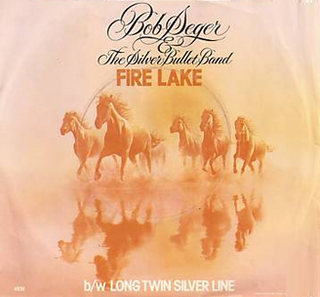
"Fire Lake" is a song written and recorded by the American musical artist Bob Seger. He had planned to record "Fire Lake" for his 1975 album Beautiful Loser, but the track was not finished. The song had been partly written years before, in 1971, and was finally finished in 1979 and released in 1980 on Seger's album Against the Wind. The single reached number 6 on the Billboard Hot 100. A live version of the song appeared on the album Nine Tonight, released in 1981.

"These Dreams" is a song by American rock band Heart from their 1985 self-titled eighth studio album. It was released on January 18, 1986, as the album's third single, becoming the band's first song to top the Billboard Hot 100. The single's B-side track "Shell Shock", was also the B-side of Heart's previous single "Never".

"Wake Up Little Susie" is a popular song written by Felice and Boudleaux Bryant and published in 1957.
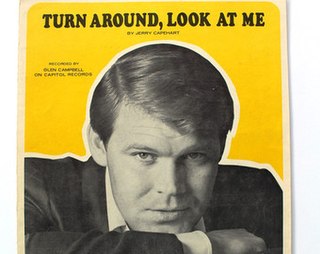
"Turn Around, Look at Me" is a song written by Jerry Capehart and Glen Campbell, though Campbell is not officially credited.

"Shame on the Moon" is a song written and recorded by Rodney Crowell on his 1981 self-titled album. It was covered by Bob Seger & the Silver Bullet Band as the lead single from their 1982 album The Distance.

"Teach Your Children" is a song written by Graham Nash in 1968 when he was a member of the Hollies. Although it was never recorded by that group in a studio, the Hollies did record it live in 1983. After the song was initially recorded for the album Crosby, Stills & Nash in 1969, a much more enhanced version of the song was recorded for the album Déjà Vu by Crosby, Stills, Nash & Young, released in 1970. As a single, the song peaked at No. 16 on the Billboard Hot 100 charts that year. On the Easy Listening chart, it peaked at No. 28. In Canada, "Teach Your Children" reached No. 8. Reviewing the song, Cash Box commented on the "incredible soft harmony luster" and "delicately composed material." Billboard called it "a smooth country-flavored ballad that should prove an even bigger hit on the charts [than 'Woodstock']." Stephen Stills gave the song its "country swing", replacing the "Henry VIII" style of Nash's original demo.
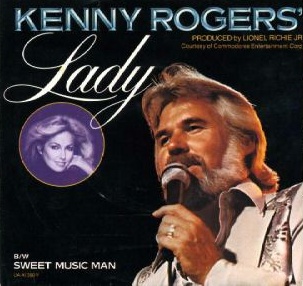
"Lady" is a song written by Lionel Richie and first recorded by American country music artist Kenny Rogers. It was released in September 1980 on the album Kenny Rogers' Greatest Hits.

"A Love Song" is a song written by Kenny Loggins and Dona Lyn George, first released by the folk-rock duo Loggins and Messina in 1973 on their album Full Sail. Country artist Anne Murray covered the song later that year for her album of the same name.

"Run to Me" is a song by the Bee Gees, the lead single from the group's album To Whom It May Concern (1972). The song reached the UK Top 10 and the US Top 20.

"How 'Bout Us" is the most successful single released by R&B music group Champaign. Composed by band keyboardist Dana Walden and originally released on the band's debut album How 'Bout Us, the title track peaked at number 12 on the Billboard Hot 100. A romantic ballad, the song was released on Valentine's Day, 1981.
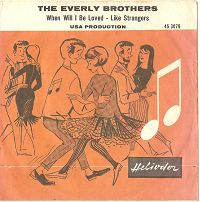
"When Will I Be Loved" is a popular song written by Phil Everly of the Everly Brothers, who had a US top-ten hit with it in 1960. Linda Ronstadt covered the song in 1975, and her version was an even bigger hit in the US, peaking at No. 2. Vince Gill also covered it in 1994 on the soundtrack of the film 8 Seconds.
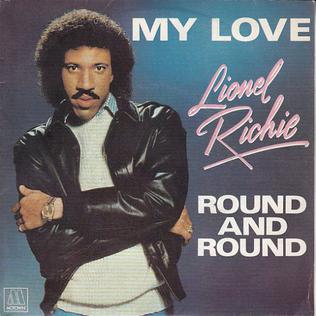
"My Love" is a song by American singer-songwriter Lionel Richie. It was released in 1983 as the third and final single from his self-titled debut solo album. The song features harmony backing vocals by country music singer Kenny Rogers. It reached the top 10 on three notable Billboard magazine charts in the spring of 1983: on the Billboard Hot 100 the song peaked at No. 5; on the Adult Contemporary chart, the song spent four weeks at No. 1; and on the R&B chart, the song topped out at No. 6. "My Love" was not among Richie's more successful singles in the United Kingdom, where it only managed to reach No. 70 on the UK Singles Chart. In Canada, it peaked at No. 28 on the RPM Top 100 Singles chart.
References
- 1 2 3 "Billboard's Top Single Picks", Billboard , November 22, 1980. p. 79. Accessed July 24, 2016.
- ↑ Adult Contemporary - Phil Everly Dare to Dream Again Chart History, Billboard.com. Retrieved April 5, 2018.
- 1 2 "Billboard Top 50 Adult Contemporary", Billboard , March 21, 1981. p. 34. Retrieved April 5, 2018.
- ↑ Hot Country Songs - Phil Everly Dare to Dream Again Chart History, Billboard.com. Retrieved April 5, 2018.
- 1 2 "Hot Country Singles", Billboard , February 24, 1981. p. 42. Retrieved April 5, 2018.
- ↑
- ↑ "Cash Box Top 100 Country", Cash Box , February 7, 1981. p. 24. Retrieved April 5, 2018.